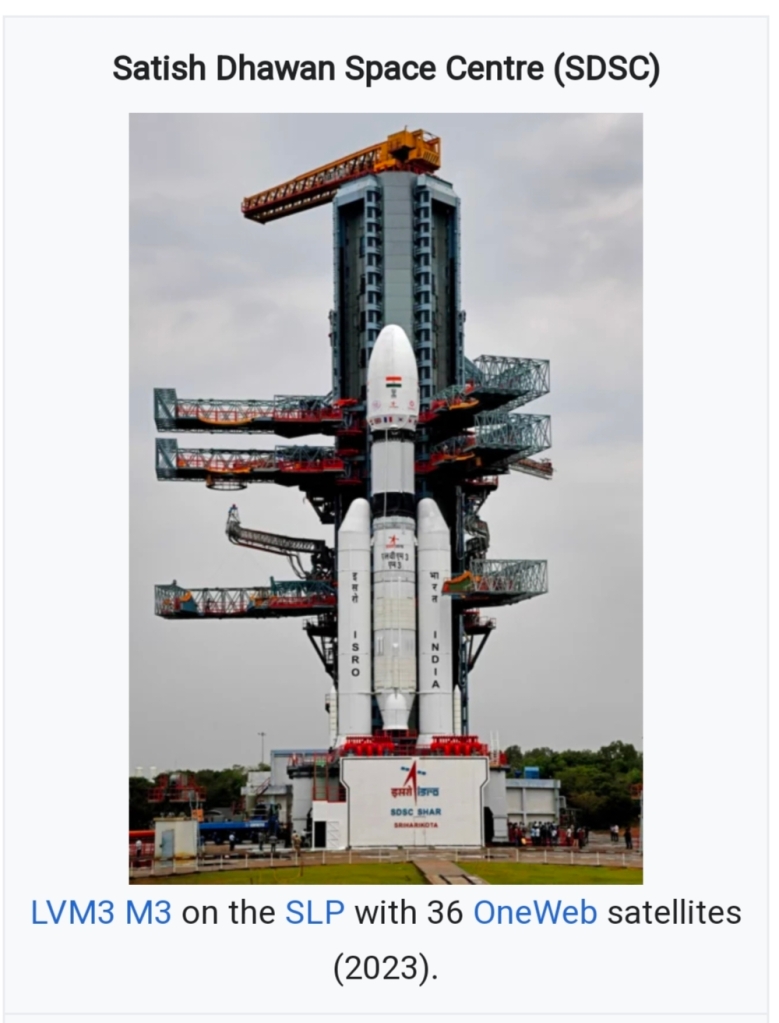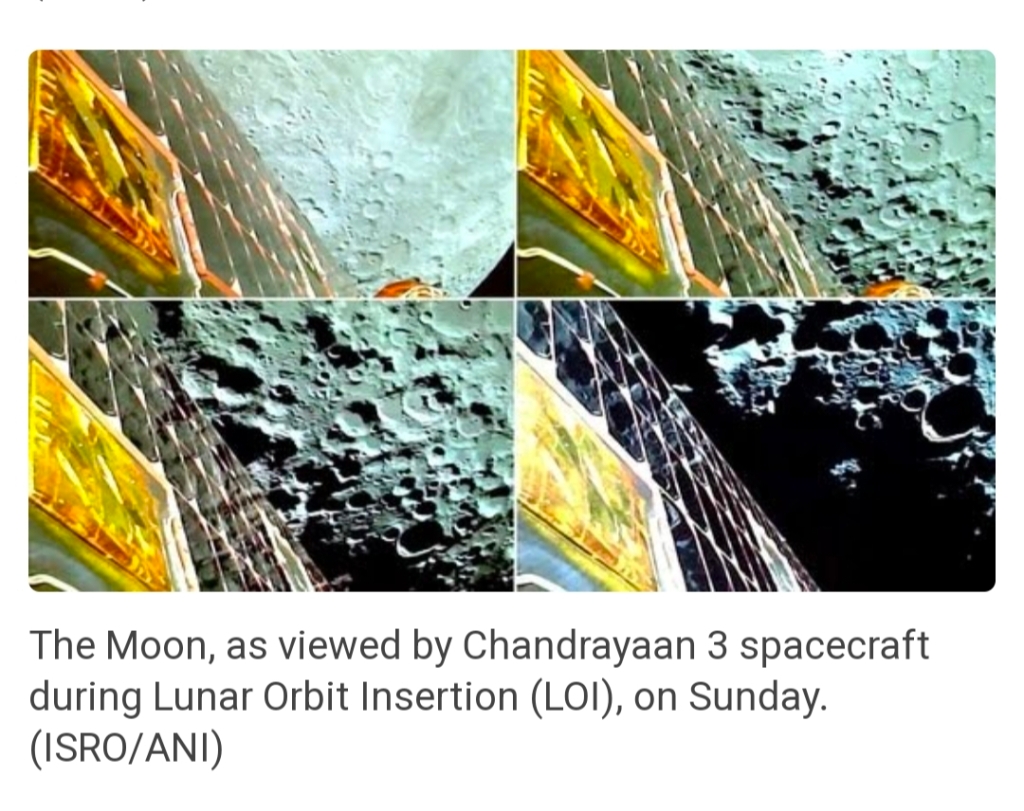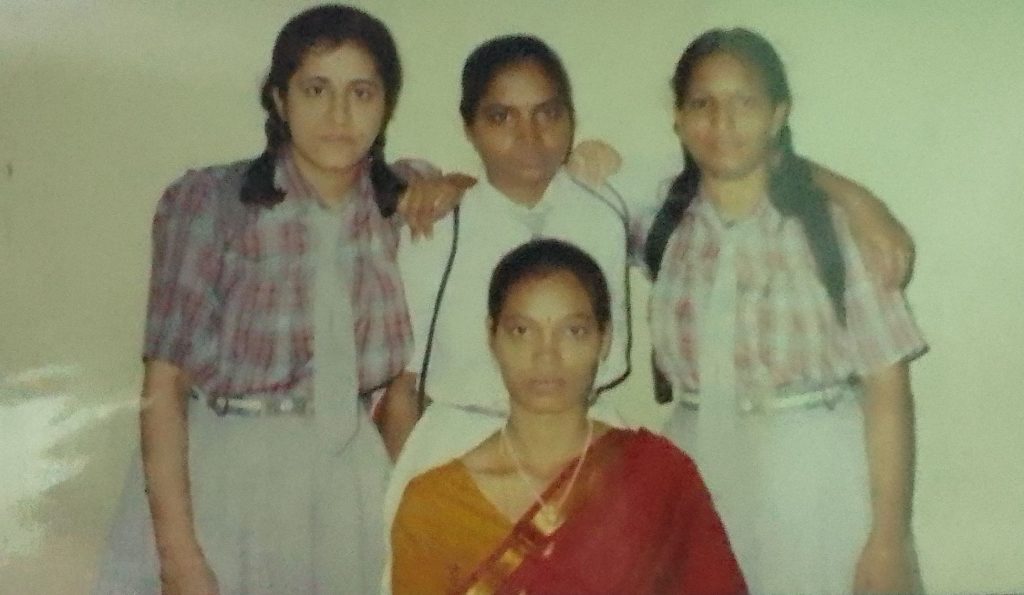Chandrayaan-3 Mission :
“Welcome buddy!”

Ch-2 orbiter formally welcomed Ch-3 LM as a two way communication between the two has been established.
MOX ( Mission Operations Complex) has now more routes to reach the LM, ISRO declared.
According to an aerospace scientist Chandrayaan-3, now flying just 25 kms. away from. moon’s nearest elliptical orbit incorporates ‘Salvage mode’ which will ensure success even in case of unforeseen circumstances and will land safely even if everything goes wrong as ISRO has taken care of all knowns and unknowns, reported Professor Radhakant Padhi of Indian Institute of Science, Bengaluru. This time it’s designed for six ‘Sigma bounds’, so its more robust, he added.
The entire design this time has been made to handle failures. Even if everything fails, all the sensors fail, still Vikram will land provided the propulsion system works well, added ISRO chief.
Mimicking Lunar conditions on Earth is impossible but Vikram Lander can perform hazard detection itself to search for the best landing site for itself.
The latest images have already identified some prominent craters to help it find its landing site ahead of touchdown.
Landing is certainly the most difficult task because scientists are yet to know many more things regarding space according to him.
Also the moon’s gravity is about one-sixth that of Earth which makes taking off easier but landing difficult and while operating a spacecraft on moon, all communication is through links and if anything untoward happens then every second is precious for corrective actions. That is why the craft has to be autonomous.
Technically landing starts about 15 minutes prior to touchdown and that is when in an orbit which is roughly 30 km. away from the moon at the nearest distance and 100 km. at the farthest distance, it starts a braking maneuver and tries to come down from 30 km. to 7.4 km.
Now in this highly electric orbit, the speed of the craft is about 6000 km/hour which needs to be reduced to 1200 km/hour for which the thrusters need to be fired in the direction of the spacecraft.
Then comes stage two where it comes down to about 6.8 km where all systems are checked and then as it comes down from 6.8 km. to 800 m. its speed needs to be reduced gradually to 150 km/ hour and at this point the spacecraft is almost hanging on top of the moon with the cameras on board looking for hazards on the landing site as it tries to find a good place to land.
In the meantime, there’s another debate that why parachutes or wings cannot be used to land on moon like they are used for return journeys of spacecrafts to Earth —
– The reason for not using such parachutes for landing is that the moon has no air and you need at least some air to be put under the parachute to provide what is called drag and the moon doesn’t offer this luxury.
In fact sometimes landing on Mars is considered easier because however thin but Mars still has an atmosphere whereas the moon has none so no air resistance exists to slow the landing naturally.
And that is also the reason why signals are sent in the form of Electromagnetic waves such as radio waves or microwaves and not as broadcast because these Electromagnetic waves are progressions of energy that don’t need a medium to propagate.

All this is so technically hooking and hence these last few minutes are termed as moments of terror but the confidence this time is high and with all the inputs with which Chandrayaan-3 was fired from SDSC, Sriharikota, it is now set —
To set its foot on the Moon.
So today, as Vikram tries getting closer to the moon, let’s discuss what makes Sriharikota special and why Sriharikota is the ideal location for being chosen as India’s prime space port for all the important missions launched by ISRO.
India’s ambitious third Lunar mission was launched from the Satish Dhawan Space Centre, Sriharikota —A spindle shaped island on the east coast of Andhra Pradesh.
Not only this but SDSC which became operational in 1971, is the only spaceport from where satellites are launched.
First advantage of this place is that it is an uninhabited island covering about 145 sq. kms. of land with a coastline of about 27 kms
Now why the coastline factor —
— Nearness to sea ensures that flight path of launch vehicles will be entirely over the sea so the impact of separated rocket hardware takes place on the high sea without any constraints and also that if by chance the rocket disintegrates or due to self destruct command to avoid bigger mishaps it falls back then it would fall in the sea thus not causing harm to life and property or the landmass.
So the sea will act as a natural grave in this case in simple terms. Well forget this point and let’s move on to some positivity.
— Its proximity to the equator makes it a favored location as the more a spaceport is near to the equator the more centripetal force it can provide due to the rotation of the Earth and the more fuel it can save.
Also Geostationary Satellites are always placed in the equatorial plane so for launch of such satellites the closer the launch site to the equator the better it is.
Next, rockets are always launched eastwards and for this reason, Sriharikota can take advantage of Earth’s west-east rotation and also of its Nearness to the equator because if a launch site is closer to the equator the magnitude of velocity imparted due to Earth’s rotation is about 450 m/s and due to this rockets launched from this position are benefited by this extra velocity and also it allows substantial increase in payload for the launch vehicle and for this reason not only the Satish Dhawan Space Centre but almost all the major spaceports in the world are located in the east to facilitate easterly direction of flight.
The land used for making a spaceport too should be solid enough to withstand intense vibrations produced while launching and Sriharikota with its strong soil composition and hard rocks beneath meets this requirement too.
According to various reports, Sriharikota is the second best port in the world after the Kennedy Space Centre, U.S.
And the best for us and our scientists as this is the land that has helped our scientists achieve the skies.
So,now the technicalities end with this and the final emotional journey of us Indians and our scientists begin.

Let’s all wait for the biggest event that starts around 17:00 hrs. and ends up at 18:04 hrs. tomorrow with Vikram conquering —-
—- The Unseen Unventured Territory of the Moon.
Marking a victory of the genius Indian minds.
Hope we’ll have another discussion on a happy note tomorrow.
Amen




Leave a comment